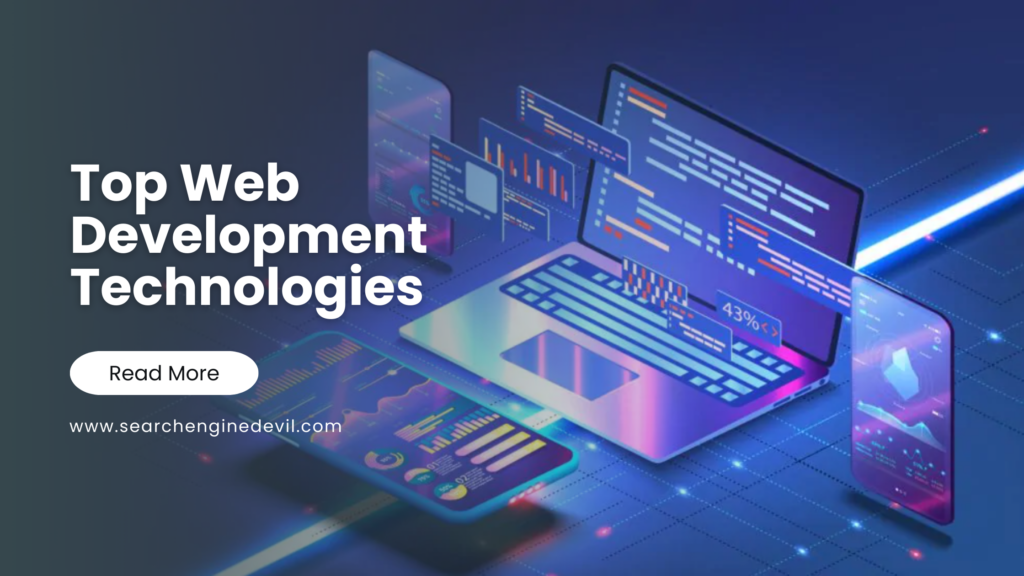The web development landscape is constantly evolving, with new technologies emerging and existing ones advancing at a rapid pace. Staying ahead of the curve is crucial for building dynamic, user-centric, and future-proof web experiences. In this blog, we’ll delve into the top web development technologies that are shaping the future of the web in 2024 and beyond.
1. Progressive Web Apps (PWAs): Blurring the lines between websites and native apps, PWAs offer an app-like experience accessible through a web browser. This translates to faster loading times, offline functionality, and push notifications – all without the need for app store downloads. As mobile usage continues to soar, PWAs are becoming a game-changer, and frameworks like React and Angular are well-equipped to build them effectively.
2. Motion UI: User interfaces are moving beyond static elements, embracing micro-interactions and subtle animations to enhance user engagement and create a more interactive and immersive experience. Libraries like Framer Motion and GSAP provide powerful tools to implement these subtle yet impactful animations, adding a layer of sophistication and dynamism to your web applications.
3. Serverless Architecture: This emerging approach eliminates the need for managing servers, allowing developers to focus solely on application development. Cloud providers like AWS Lambda and Google Cloud Functions handle server provisioning and scaling, freeing up resources and reducing development time and costs.
4. API-first Development: This approach prioritizes building well-defined and documented APIs (Application Programming Interfaces) as the foundation for web applications. This enables seamless integration with external services and fosters modularity and reusability of code, leading to faster development cycles and easier maintenance.
5. Data Security: In an age of growing concerns around data privacy, robust security measures are no longer optional, but essential. Implementing secure authentication protocols, data encryption, and regular vulnerability assessments are crucial to safeguard user information and build trust. Frameworks like Django and Laravel offer built-in security features to streamline this process.
6. Blockchain Technology: While not directly a web development technology, blockchain’s decentralized and secure nature holds immense potential for web applications. Its applications range from secure data storage and identity management to building trustless and transparent online marketplaces. While still in its early stages of web integration, blockchain presents exciting possibilities for the future of web development.
7. Artificial Intelligence (AI) and Machine Learning (ML): AI and ML are revolutionizing various industries, and web development is no exception. Chatbots powered by AI can provide real-time customer support, while ML algorithms can personalize user experiences and optimize content delivery. Integrating these technologies can lead to more intelligent and interactive web applications.
8. Accelerated Mobile Pages (AMP): Developed by Google, AMP focuses on creating lightweight mobile pages that load significantly faster, especially on slower internet connections. This is crucial for improving mobile user experience and website performance in regions with limited bandwidth.
9. Single Page Applications (SPAs): SPAs load a single HTML page initially and dynamically update the content without reloading the entire page. This provides a smoother and more responsive user experience, particularly for complex web applications. Frameworks like React and Vue.js are popular choices for building SPAs.
10. The Continued Rise of Cloud Computing: Cloud platforms like Google Cloud Platform and Amazon Web Services (AWS) offer scalable and cost-effective solutions for web development. They provide resources like storage, databases, and compute power, allowing developers to focus on building applications without managing infrastructure.
Choosing the right technology stack depends on the specific needs of your project. However, by understanding these top trends and staying informed about the ever-evolving web development landscape, you can ensure that your web applications are not only functional and secure but also innovative and engaging for your users.



